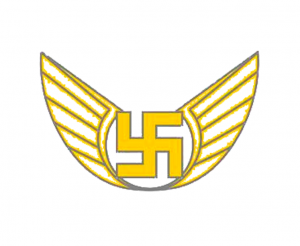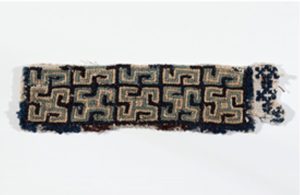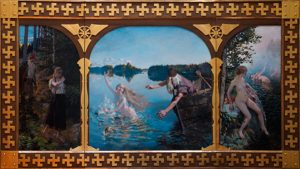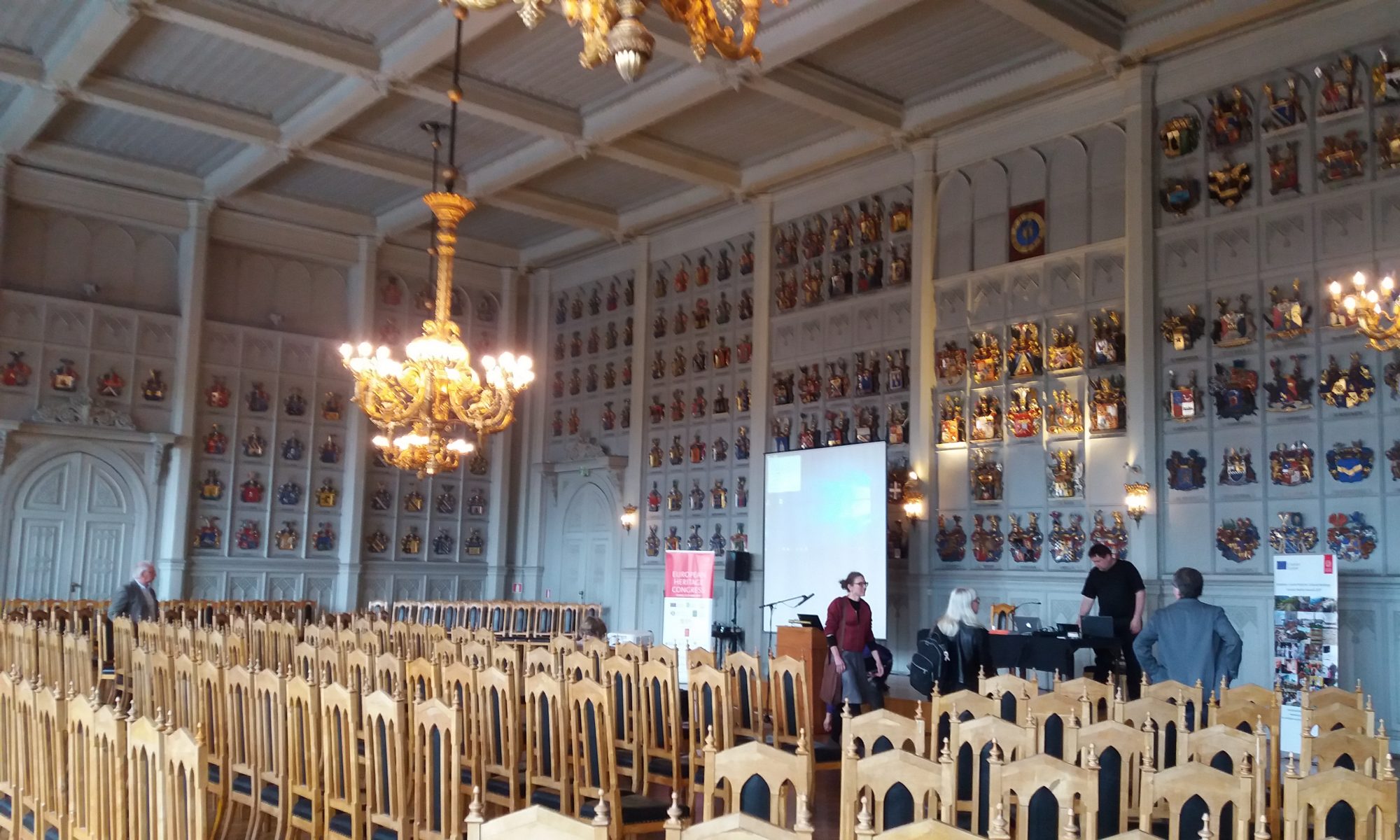In a continuation of presenting work of students from the 2020 “Politics of Memory and Oblivion” course, here is the second of two blog posts put together by Jonni Karlsson, Grisell Macdonel, Laura Nissinen and Essi Nurmi on the theme of difficult heritage. The two original blog posts can be viewed here.
”We thought that it would be easier for us if we changed it.”

In June 2020 Teivo Teivainen, a professor of world politics in the University of Helsinki near-accidentally noticed that the controversial symbol for the Finnish Air Force, a winged swastika was no longer in as use as their official signet.
After consulting the communications department of the Finnish Air Force, Teivainen got a confirmation that the symbol had been changed in order to ”unify the symbolism of the divisions within the Finnish Defence Forces”.
What was interesting is that the change had in fact been conducted as early as in 2017. However, neither the Air Force, nor the Finnish Defence Forces in general, apparently saw no reason to inform the public about the change at all, even if the swastika as the symbol for the air force has been a from time to time heated debate ever since the end of WWII.
Even when the use of the symbol made headlines in Finland in 2018. The Air Force did not see any reason to tell the folks publicly debating about the use of the symbol that it is no longer in official use.

”We thought that it would be easier for us if we changed it”, commented brigade general Mikkonen finally to Helsingin Sanomat when the use of guerilla tactics with changing of the symbol caused some media attention after its reveal by Teivainen.
Until this day the Air Force has not given any official announcement about changing the symbol. This reveals a clear narrative of a dark symbol that is by action deemed so controversial that even removing it has been thought best kept hidden.
Svastika, Fylfot or Hakaristi? The Symbol of Many Names and Origins

Svastika is an ancient and universal symbol that has appeared in various cultures around the world since the Stone Age. The name “svastika” originates to Sanskrit and was only adopted to western cultures in the end of 19th century. The oldest know figures resembling swastika are Paleolithic Stone Age figures from present-day Ukraine. The symbol has also been used as a decorative pattern or a magical sign in American Indian cultures and in Africa.

Embroidery in woman’s shirt, linen.
Finnish-Ugrian collection, SU4531:159
The National Museum of Finland (Finna)
In the Iron Age and the Middle Ages, the svastika and its many versions were used in Scandinavia and Slavic cultures as a sign of magic or protection engraved on objects. In Scandinavia the symbol was called “fylfot”. In the Middle Ages, the symbol appears in both secular and ecclesiastical contexts across Europe. In Finland, the painted figure of svastika has been found in the medieval Christian church of Nousiainen.

A decorative pattern resembling the svastika was used in the bronze spiral patterns of the Iron Age and early medieval aprons in Karelia, an area situated today in the Eastern Finland and bordering Russia. Later in historical times, the svastika or as it is named in Finnish, “hakaristi”, is known to have been used in Karelian area as a sign of happiness in embroidering clothes, protecting buildings and cattle, and also as a peasant wooden sign.

Woman’s headgear, linen and wool. Finnish-Ugrian collection, SU4291:44; P71 ,The National Museum of Finland (Finna)
In the late 19th century, the symbol was associated with Karelianism, the national romantic admiration of the area and culture of Karelia. The symbol was used by the Karelian enthusiast, painter Akseli Gallen-Kallela (1865–1931) in one his versions of the painting Aino (1889). The painting depicts a story from Kalevala (1835), the national epic of Karelia and Finland. Painting’s other version, one without the swastika symbols, is located in the permanent exhibition of the Finnish National Art Gallery.

In the early 20th century, the svastika became a symbol of several anti-Semitic movements and the Nazi-Germany. Today the symbol is popular among various racist groups. Due to negative associations, the swastika is currently banned in many European countries other than as a tool for teaching history.
”Considering the controversy related to the symbol, it is actually surprising that the Air Force held on to it for that many years”, argues activist-journalist Jari Tamminen in Voima-magazine. It has been suggested that by abandoning the symbol one would admit it unsuitable for such use and thus being forced to face the baggage of using the symbol for decades.
References:
https://voima.fi/hairikot/artikkeli/ilmavoimat-luopuvat-hakaristista/
https://www.hs.fi/kotimaa/art-2000006557623.html
https://fennougrica.kansalliskirjasto.fi/handle/10024/89795
https://kalmistopiiri.fi/2017/01/10/hakaristi-symbolin-esihistoriaa/
